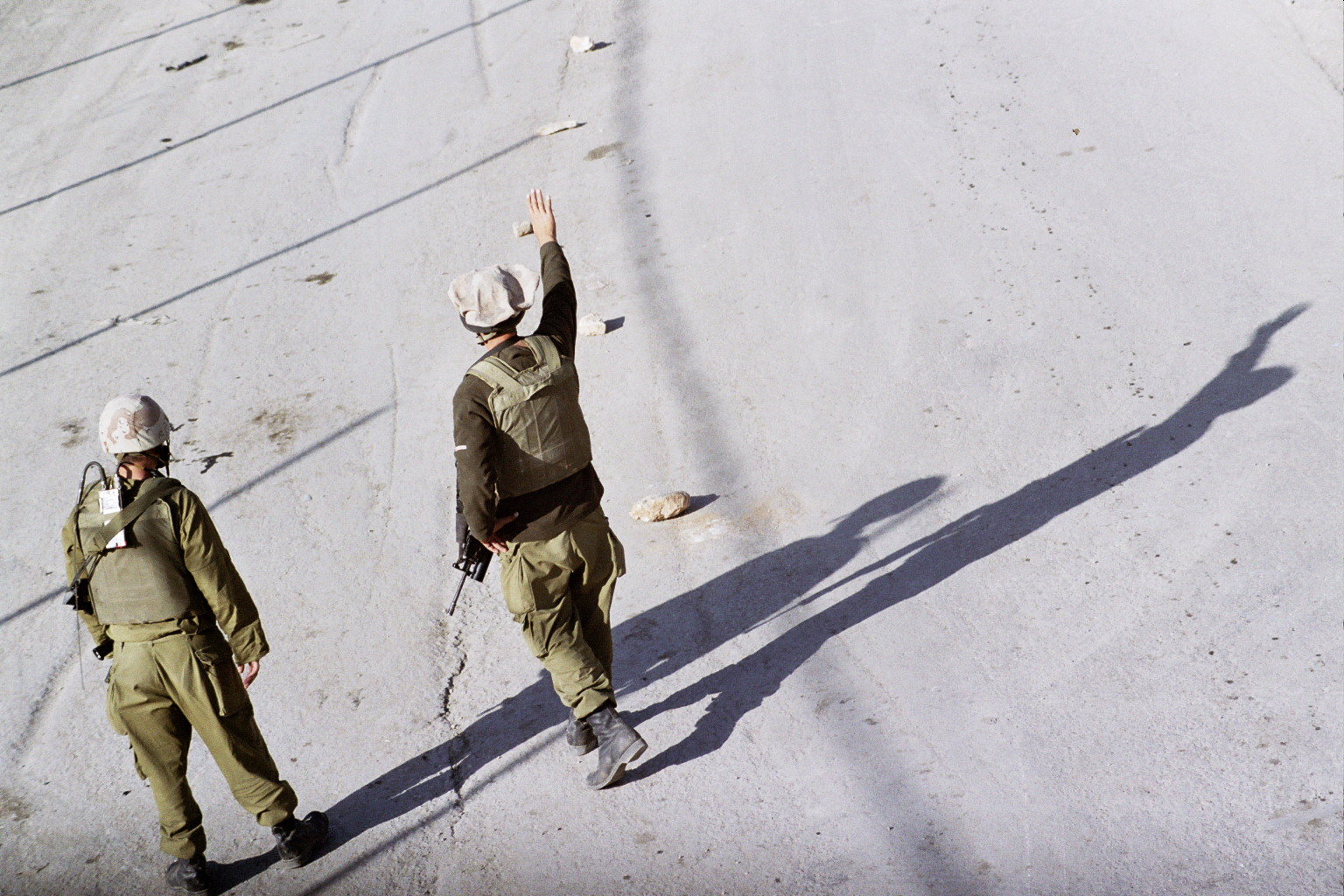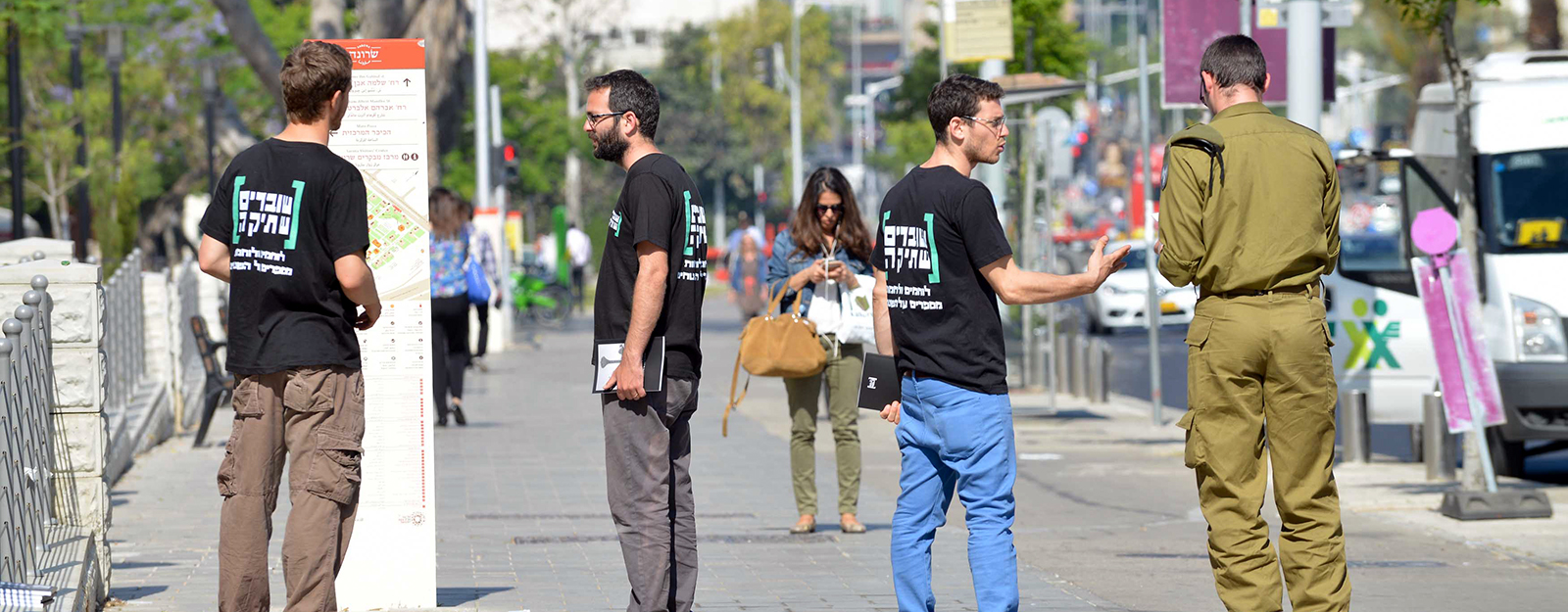You say no one leaves the houses. What do you mean? There’s a kind of marked road, the fast access road to go in and out [the road through which the buses and forces enter] and along its entire route there are houses from which no one leaves. There are large forces there along the entire route and you don’t see anyone outside. They aren’t allowed to walk around there, or get near. Whoever gets close is pushed back. You don’t see them like going out at that time.
It’s a kind of curfew? It’s not defined as such, but it’s a type of [curfew].
A person wakes up in the morning, wants to go to the bakery next door to eat a pastry and drink some coffee – he is not allowed? It’s usually at night, but in principle, he can’t come close. They’re not allowed. The instructions were to push back anyone who gets close. Turn around, go around, go back home. The incident I remember best is when they went in to clean, we were with some 10 adolescent boys [Israelis]. There was an entire envelope around. We didn’t clean but we secured them and they just went into the tomb and cleaned.
How many soldiers secured 10 people? A lot. Every enterance to the tomb involves all the battalions in the brigade. Every battalion sends a front command squad and more guys surrounding and there are lots of Border Police forces. The advance guard company would deploy snipers on the rooftops and stuff like that at large entrances.









 testimonies
testimonies  media & content
media & content 










 Every entrance to Joseph's Tomb requires all the battalions in the brigade
Every entrance to Joseph's Tomb requires all the battalions in the brigade 

 terms of use & privacy policy
terms of use & privacy policy